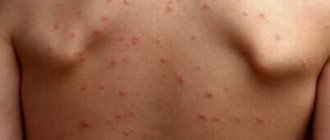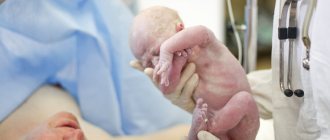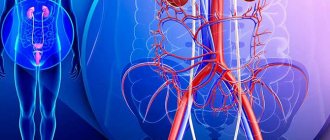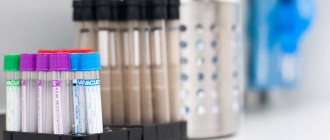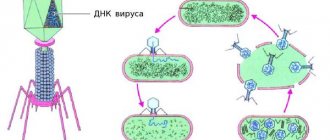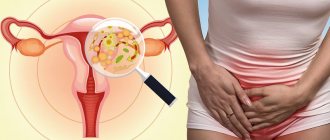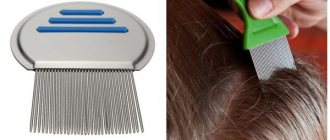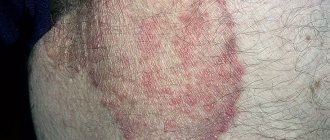What is Treatment of Male Diseases?
In 2/3 of all men suffering from disorders of the genitourinary system and infertility, symptoms of the disease do not appear until the later stages. This significantly complicates the diagnosis and treatment of the disease. However, an experienced osteopath is quite capable of identifying disorders in the body and preventing them from developing into a chronic stage.
Male diseases: symptoms, causes, consequences
Depending on the nature of the disorders, the symptoms of the disease may manifest themselves in different ways. First of all, you should pay attention to the following:
- changes in the external genitalia. This can be various deformations, an increase or decrease in size, the appearance of rashes, ulcers, etc. The latter speaks more likely of an infectious disease classified as venereal, while the rest speaks of inflammatory processes in the body, the development of hydrocele, testicular hydrocele, dysfunction of the adrenal glands and many other diseases. Only a specialist can diagnose them and prescribe proper treatment. Therefore, at the first signs, you need to contact a urologist and osteopath;
- general manifestations are increased or decreased temperature, a sharp decrease in body weight, general weakness. All this may indicate male inflammatory diseases or cancer. The latter are especially dangerous and require immediate treatment;
- pain. These can be sensations that are localized in the groin area, prostate, external genitalia, manifested in the form of constant aching pain or pain during urination or ejaculation. A huge number of diseases are characterized by similar symptoms; additional tests and laboratory tests may be needed for an accurate diagnosis;
- disorders of the genitourinary system. This may include urinary incontinence or changes in its color, frequent urge to urinate, or difficulty emptying. It is also possible to have various secretions in the urine. Such manifestations can be associated with various male diseases and are quite dangerous.
Despite the difference and variety of diseases defined as male, their causes are approximately the same:
- infections. These could be sexually transmitted infections or household diseases that cause complications in the genitourinary system;
- hormonal disorders caused by an abundance of unhealthy food, fatty foods, as well as adverse external influences (ecology);
- circulatory disorders resulting from a predominantly sedentary lifestyle and lack of mobility;
- injuries to the pelvic area, leading to displacement of the pelvic bones and internal organs;
- Unhealthy Lifestyle. A typical male disease often develops against the background of smoking and taking alcohol and drugs.
Prostate problems
Prostate dysfunction can be caused by any of the above reasons. This is especially dangerous, since prostatitis and prostate adenoma lead to infertility and often precede impotence.
Treatment of any male disease caused by a malfunction of the prostate gland may require quite a long time if the disorder can be diagnosed only in the later stages. Osteopathic urological massage demonstrates high effectiveness for prostatitis and its various forms.
— What should patients do who, for one reason or another, have advanced the disease?
— Today, urologists’ approaches to treatment have changed dramatically. This is facilitated by both the constant improvement of diagnostics and the emergence of new types of medical equipment. Gone are the days of open surgery with huge incisions. The surgical approach changes to an instrumental one. We introduce low-traumatic endoscopic operations, bringing them to perfection. This allows you to preserve the organ, achieve a shorter rehabilitation period, and a quick return to work capacity.
erectile disfunction
The causes of impotence (erectile dysfunction) may be as follows:
- physical. Associated with disorders of the genitourinary system, injuries and various diseases. The reasons for the lack of “male” strength can be explained by hormonal abnormalities, disturbances in the functioning of the circulatory system or the nervous system;
- psychological. Caused by self-doubt, fear of the first sexual intercourse, fear in bed of not living up to your ideas or your partner’s fantasies. Psychogenic impotence is most often observed in young people, as well as in men with symptoms of mental and neurotic disorders;
- mixed. They assume a combination of both of the above factors, the manifestation of one against the background of the other;
- medicinal. Some drugs cause serious diseases of the genitourinary system that do not go away even after stopping their use.
Osteopathic treatment demonstrates high effectiveness in combating the causes of sexual dysfunction. Treatment of a disease associated with impaired potency may include, in addition to purely manual techniques, other types of therapy - in particular, relaxing and psychological effects that help normalize the functioning of all body systems.
— How do you assess the clinic’s capabilities in providing assistance for diseases of the genitourinary system?
— Urological care at Clinic No. 1 is provided at the highest quality standards. And I have something to compare with, because... My professional activity included working in federal-level medical centers. Doctors at Clinic No. 1 use all available methods to identify and eradicate the causes of diseases, and prescribe additional diagnostic and instrumental research methods. Unfortunately, not all disorders of the genitourinary system are treated conservatively. In such cases, surgical intervention is indicated. When performing operations, urologists have access to operating rooms equipped with the latest medical technology, the latest endoscopic equipment, and high-precision anesthesia.
Patients are more accepting of the need for medical intervention when they see comfortable recovery conditions and a short hospital stay. This is especially liked by men who are conservative by nature and do not like it when their usual environment is disturbed.
Male infertility
The causes of male infertility can be various factors leading to dysfunction of certain organs of the genitourinary system and other systems of the human body. Cases of physical impossibility of sexual intercourse should not be classified as male infertility - they are more suitable under the definition of “erectile dysfunction”.
The most common causes of infertility:
- low sperm quality. Fertilization may be impossible in cases where, due to various congenital pathologies and unfavorable external influences (nutrition, ecology, bad habits), sperm have an irregular shape, are generated by the body in insufficient quantities or have low mobility;
- dysfunction of the prostate gland (prostate). The prostate is an important organ of the male genitourinary system. It is here that one of the secretions that make up sperm and is responsible for the viability of sperm is produced. The prostate, as a muscle, is also responsible for ejaculation. Disturbances in its functioning can be caused by blood stagnation, muscle spasms, displacement of the pelvic bones, causing circulatory problems and changes in the position of internal organs;
- injuries and diseases of the pelvic bones, sacrum, coccyx. From an evolutionary point of view, the pelvic bone system also performs a protective function for the reproductive system. It contains many nerve endings of the autonomic system. Therefore, even slight displacement of bones and damage to joints can cause neurological disorders. No less dangerous is low mobility in the pelvic area, which leads to poor circulation, displacement of bones relative to each other, and disruption of neural connections.
Sources
- Malan NT., von Känel R., Steyn HS., Kruger R., Malan L. The protective role of oestradiol against silent myocardial ischemia and hypertension risk in South African men: The SABPA study. // Int J Cardiol - 2021 - Vol244 - NNULL - p.43-48; PMID:28629624
- Griffiths M.E., Malan L., Delport R., Cockeran M., Reimann M. Troponin T release is associated with silent myocardial ischaemia in black men: The SABPA Study. // Eur J Prev Cardiol - 2021 - Vol24 - N9 - p.942-950; PMID:28195519
- Aggarwal S., Talwar V., Virmani P., Kale S. Anesthetic Management of Clinically Silent Familial Pheochromocytoma with MEN 2A: A Report of Four Cases. // Indian J Surg - 2021 - Vol78 - N5 - p.414-417; PMID:27994341
- Li LL., Li Y., Liu T., Wang RT. Bone mineral density is negatively associated with arterial stiffness in men with silent brain infarction. // Int J Stroke - 2015 - Vol10 - N7 - p.E74; PMID:26404882
- Kucukler FK., Simsek Y., Turk AÇ., Arduc A., Guler S. Osteoporosis and Silent Vertebral Fractures in Nursing Home Resident Elderly Men in Turkey. // J Clin Densitom - 2021 - Vol20 - N2 - p.188-195; PMID:26071170
- Winata J., Panda AL., Azis RA. Does albuminuria correlate with silent myocardial ischemia and delayed heart rate recovery in hypertensive men without diabetes mellitus. // High Blood Press Cardiovasc Prev - 2015 - Vol22 - N2 - p.143-8; PMID:25851840
- Barbosa AP., Rui Mascarenhas M., Silva CF., Távora I., Bicho M., do Carmo I., de Oliveira AG. Prevalence of silent vertebral fractures detected by vertebral fracture assessment in young Portuguese men with hyperthyroidism. // Eur J Endocrinol - 2015 - Vol172 - N2 - p.189-94; PMID:25576150
- Weersink RA., Taxis K., McGuire TM., van Driel ML. Consumers' questions about antipsychotic medication: revealing safety concerns and the silent voices of young men. // Soc Psychiatry Psychiatr Epidemiol - 2015 - Vol50 - N5 - p.725-33; PMID:25547083
- Minn YK., Suk SH., Do SY. Osteoporosis as an independent risk factor for silent brain infarction and white matter changes in men and women: the PRESENT project. // Osteoporos Int - 2014 - Vol25 - N10 - p.2465-9; PMID:25011984
- Friberg L., Engdahl J., Frykman V., Svennberg E., Levin LÅ., Rosenqvist M. Population screening of 75- and 76-year-old men and women for silent atrial fibrillation (STROKESTOP). // Europace - 2013 - Vol15 - N1 - p.135-40; PMID:22791299
Treatment of urological (male) diseases using osteopathic methods
Osteopathic techniques demonstrate high effectiveness in the treatment of many diseases, including those that are considered specifically male. Perceiving all the systems, muscles, bones and joints of the human body as an interconnected chain that fails if there is a violation in any of its links, osteopathy for any disease looks for its root cause. This is why the techniques used by an osteopath turn out to be more effective than the symptomatic treatment promoted by traditional medicine.
Treatment of diseases of the male genitourinary system using osteopathic methods includes effects on the musculoskeletal system (bones and joints of the pelvis, lumbar spine, sacrum, etc.), internal organs (prostate, kidneys, bladder, abdominal diaphragm area), as well as cranial techniques that help restore brain micropulsations and improve the overall blood supply system of the body.
An important aspect is the effect on the human autonomic nervous system. Therefore, when carrying out treatment, the osteopath works to restore the internal balance of the sympathetic and parasympathetic systems, and the entire body as a whole.
The complex of osteopathic procedures also includes capillary therapy aimed at improving vascular conductivity, restoring blood and lymph flow both throughout the body and specifically in the pelvic area. Restoring blood flow helps to improve the quality of secretion of the prostate gland with a subsequent improvement in the quality of sperm, as well as the general normalization of the functioning of the male genitourinary system.
Proper nutrition and a healthy lifestyle are prerequisites for effective treatment. A specialist will help you balance your diet, which will allow the body to receive the nutrients and building materials necessary for growth, development and recovery, as well as solve problems with excess weight, if any. After all, excess weight always means additional stress experienced by the human skeleton and muscular frame, as well as disruption of the functioning of internal organs, which invariably increases the risk of male ailments.
Human papillomavirus (HPV)
The first signs of the disease may appear anywhere from 2 weeks to a year after infection. Sometimes this period is significantly extended. The main symptoms of HPV in men can be divided into several separate categories, which manifest themselves in different ways and affect health:
- warts are round formations, usually flesh-colored;
- Condylomas are warts with a pointed shape. Often localized in the groin area and on the mucous membrane of the genital organs;
- papulosis - rashes on the penis, resembling pinkish plaques in appearance, slightly raised on the skin;
- Bowen's disease is the formation of a large round plaque on the penis. It has a red color and clear contours.
Signs of HPV such as warts and condylomas occur mainly on the genitals, sometimes in the armpits, face, neck, back, and abdomen. Their growth may be accompanied by burning and itching. Lack of timely treatment can lead to narrowing of the foreskin and, accordingly, to serious complications.
Increased activity of the immune system contributes to the partial disappearance of formations. Self-healing from HPV is possible only in the absence of re-infection. Herpes infection (cytomegalovirus, herpes simplex)Primary herpes
The incubation period of the disease ranges from 3 to 20 days. The man has the following symptoms:
- redness and swelling of the mucous membranes, burning and itching;
- the appearance of rashes in the form of transparent bubbles (vesicles), filled with liquid and prone to merging. They can be localized on the urethra of the penis, the perianal area and thighs, the head and foreskin of the penis, the coronary groove, and less often on the scrotum, around the anus and pubis. Initially, the vesicles are transparent, but gradually become dull, filling with a whitish-yellow liquid. Characterized by constant and fairly high pain and itching;
- general deterioration of the condition: pain in muscles and joints, increased body temperature, severe weakness, fatigue, headache, dizziness, loss of appetite, sleep disturbance, vomiting and nausea;
- pain and discomfort when urinating;
- swelling of the penis, pain in the scrotum;
- enlargement and inflammation of the lymph nodes in the groin area;
- purulent discharge with an unpleasant odor from the penis.
After about 5-7 days, the vesicles open, leading to the formation of ulcerative surfaces. They become crusty and, as a rule, are not deep, so bleeding is not observed. After they heal, no scars remain. These areas may begin to fester and cause pain if they become infected again. A purulent infection always leads to a deterioration in the general condition.
20% of men may experience a completely asymptomatic form of the disease or a low-symptomatic form, in which symptoms appear in small quantities and do not cause pain. This often leads to the fact that a man does not even suspect that he is sick.
There are other atypical forms of herpes, which appear much less frequently than in women:
- erythematous - inflammation, hyperemia, itching and pain in the areas of rashes, generalized symptoms appear;
- bullous - the most annoying symptom is vesicles and ulcerative surfaces;
- hemorrhagic - hemorrhages in the affected areas, especially in the rectum and urethra;
- itchy - there may even be an absence of vesicles; the most pronounced symptoms are itching and burning in the usual places of their localization.
In the case of an atypical course of the disease, it can be masked by the symptoms of influenza and other viral diseases. The total duration of primary herpes is 5-7 weeks.
Osteopathic massage
Osteopathic manual techniques are superficially similar to classical massage, but in essence they do not have much in common with it. Although an osteopath may well use his knowledge and skills for massage, his methods are more subtle and therefore allow him to achieve the same results more delicately, while providing a targeted effect on the body and improving the overall well-being of the patient.
Osteopathic urological massage is a set of procedures used as a method of treatment and prevention of male diseases. This technique is very effective and allows you to get rid of prostate problems, erectile dysfunction, male infertility, and premature ejaculation. Unlike classic urological massage (prostate massage), the osteopathic method is more gentle and painless. It does not even cause a feeling of discomfort, as it is carried out through gentle touches, vibration, and targeted shallow penetration.
To cope with male disease, a specialist acts on the muscles, spasms of which cause a disturbance in the general balance in the body, displacement of the position of bones and internal organs, problems with the blood supply to certain areas and the body as a whole. Osteopathic treatment is possible and effective only if the root causes of the disease are correctly and accurately diagnosed, which should also be entrusted to a chiropractor.
Unlike other techniques, osteopathic massage helps to cope with the disease without medication. It is effective in itself both as a method of getting rid of male problems and as a preventive procedure. At the same time, we should not forget about proper nutrition and a healthy lifestyle, which - as mentioned above - are an important part of osteopathy. Correction of the diet should be carried out regardless of the nature and duration of the osteopathic effect.
Preparing for your appointment
In most cases, no special training is required. Regular hygiene procedures are sufficient.
However, sometimes you may need to come to your appointment on an empty stomach (if you need to take tests) or with a full bladder (if you plan to have an ultrasound). In certain cases, you may be advised to abstain from sexual intercourse for 1-2 days before your appointment. Therefore, when making an appointment, it is advisable to briefly explain to the specialist what is bothering you and clarify whether you need to prepare for an appointment with a urologist.
